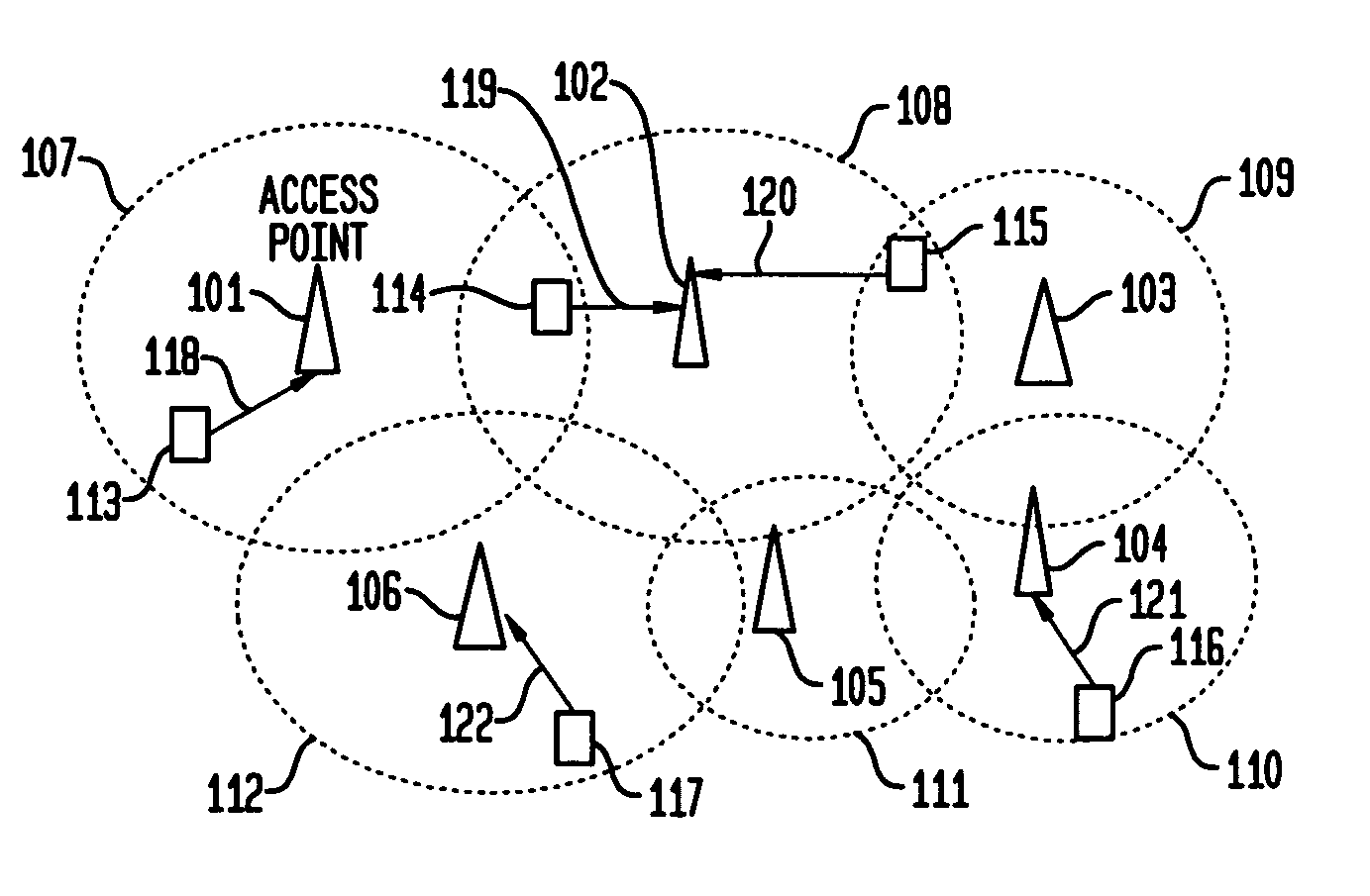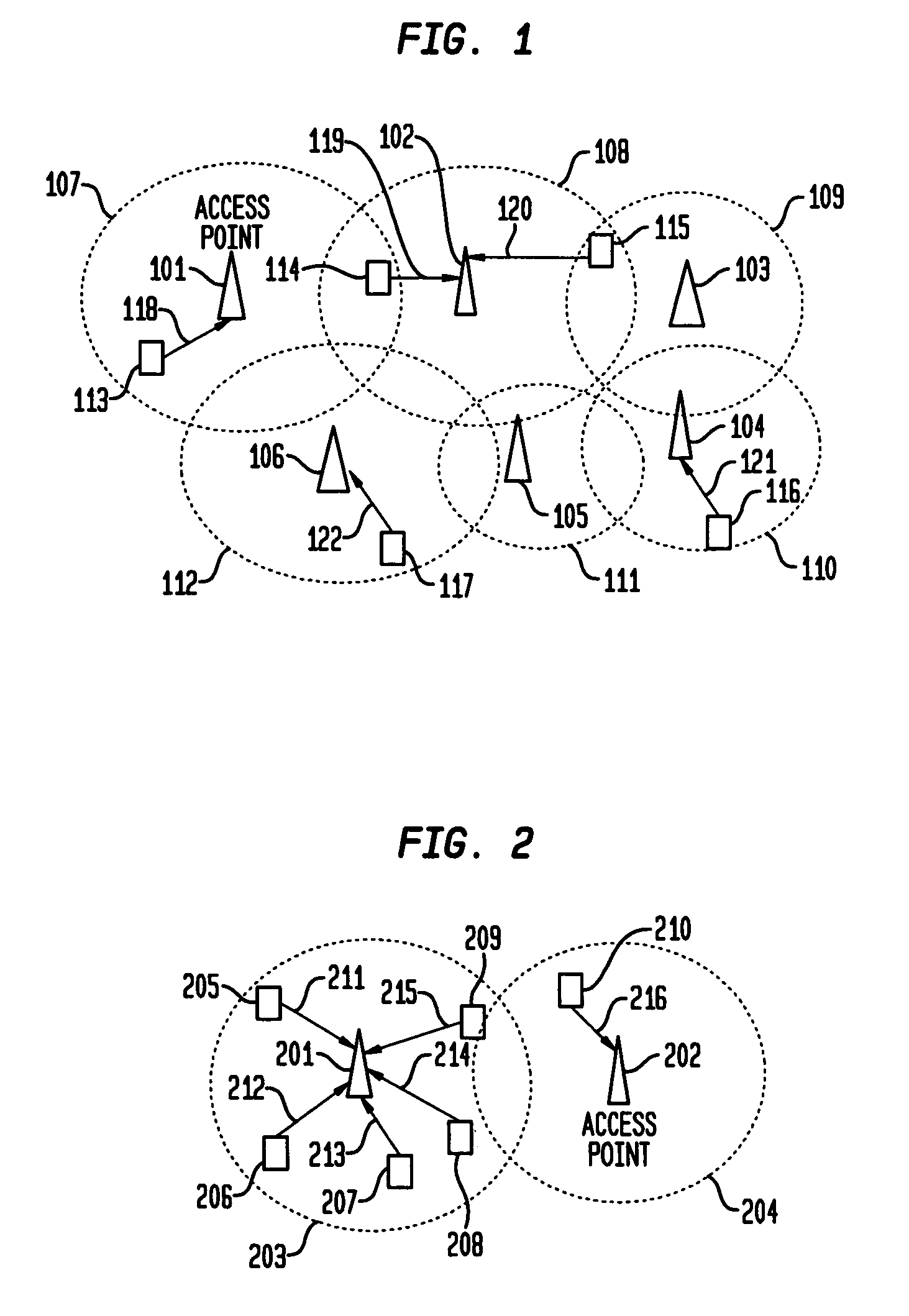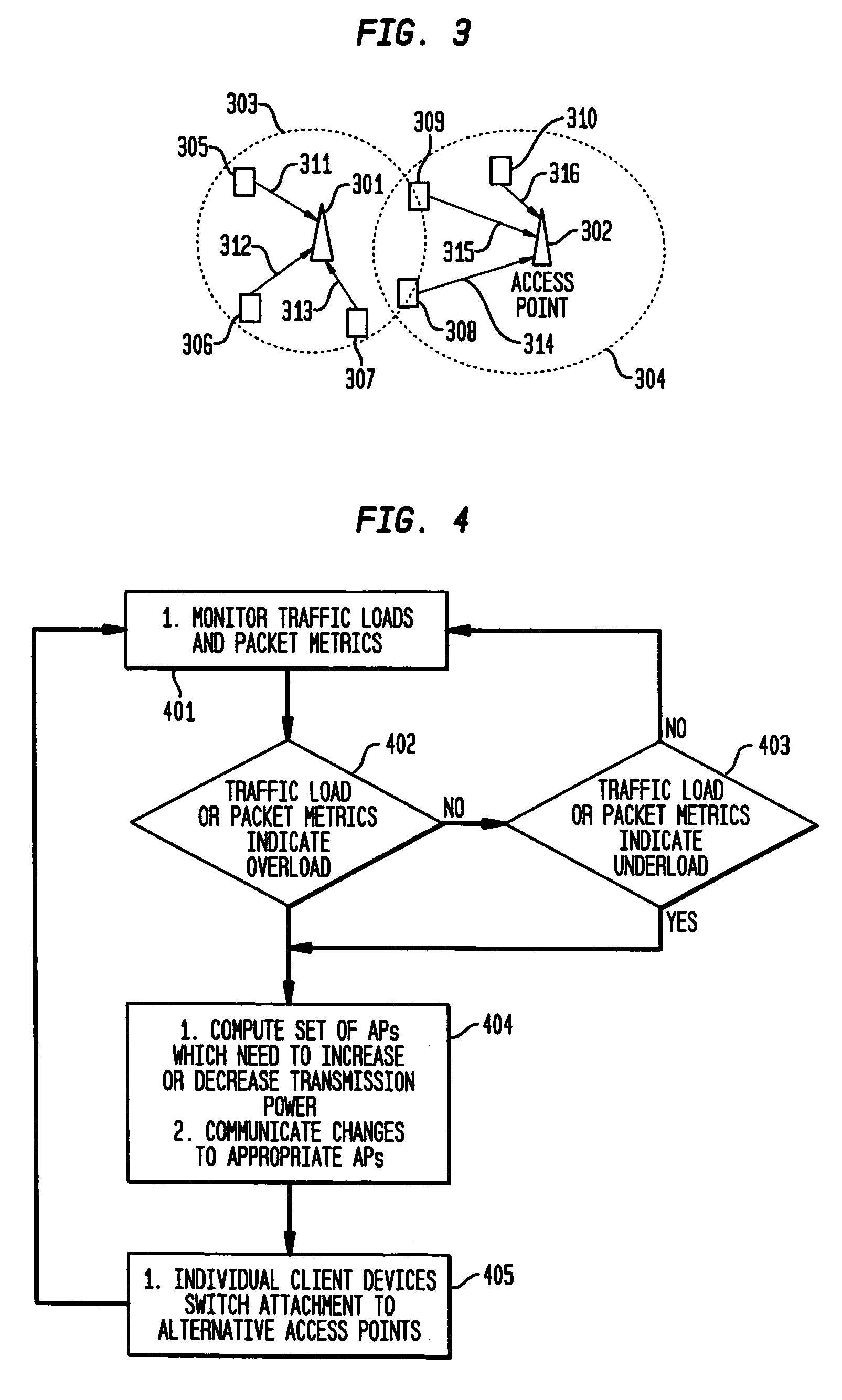Method and apparatus for load sharing in wireless access networks based on dynamic transmission power adjustment of access points
- Summary
- Abstract
- Description
- Claims
- Application Information
AI Technical Summary
Benefits of technology
Problems solved by technology
Method used
Image
Examples
Embodiment Construction
[0035]The invention is directed to a new load balancing mechanism that is a member of the Load Adaptation approach. While prior art mechanisms for Load Adaptation rely on explicit signaling (exchange of messages) between the AP and a wireless client node, in effect, instructing it to switch to an alternative AP, even though the wireless node is still within the footprint of the current AP, the load-balancing mechanism according to one embodiment of the present invention, as will be hereinafter described, does not require any such explicit signaling, but instead, forces a target wireless device to switch to another AP, by reducing the footprint of the AP to exclude the wireless device from the new footprint.
[0036]That is, the present invention provides a way in which a set of access points providing wireless cellular coverage use adjustments to their transmission powers to alter the cellular topology in response to excessive traffic loads at certain “hot-spots”. For example, an overl...
PUM
 Login to View More
Login to View More Abstract
Description
Claims
Application Information
 Login to View More
Login to View More - R&D
- Intellectual Property
- Life Sciences
- Materials
- Tech Scout
- Unparalleled Data Quality
- Higher Quality Content
- 60% Fewer Hallucinations
Browse by: Latest US Patents, China's latest patents, Technical Efficacy Thesaurus, Application Domain, Technology Topic, Popular Technical Reports.
© 2025 PatSnap. All rights reserved.Legal|Privacy policy|Modern Slavery Act Transparency Statement|Sitemap|About US| Contact US: help@patsnap.com



